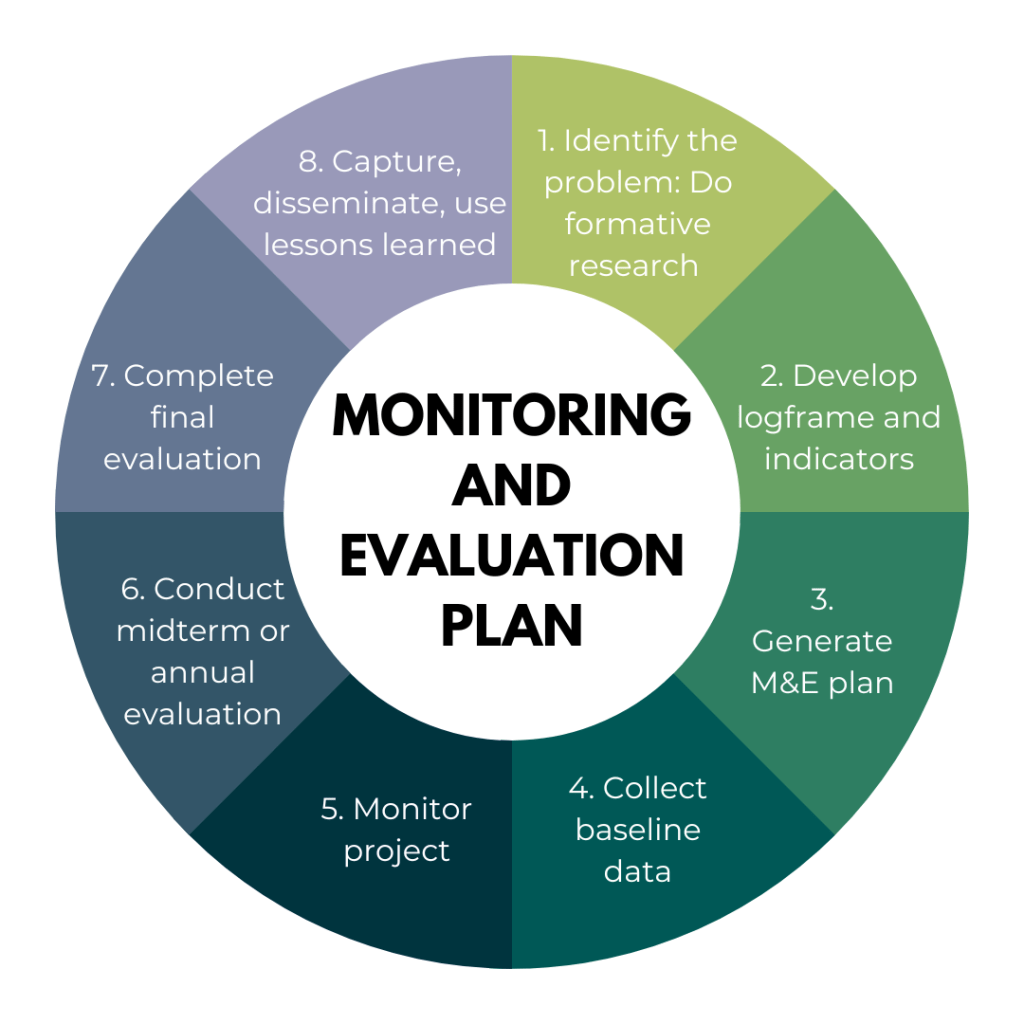Monitoring, Evaluation, and Learning (MEL) research is a comprehensive approach that supports organizations, programs, and projects in achieving their desired outcomes, learning from their experiences, and adapting their strategies as necessary. MEL helps to track progress, determine the effectiveness of interventions, and use the gathered data to inform decision-making and improve performance.
Monitoring is the ongoing, systematic collection and analysis of data to track progress towards specific objectives and goals, helping to identify trends, successes, and challenges. Evaluation is a periodic, objective assessment of a project, program, or policy to determine its relevance, effectiveness, efficiency, impact, and sustainability, which helps to draw lessons and make recommendations for improvement. Learning is the continuous process of using monitoring and evaluation data to inform decision-making, adapt strategies, and improve performance. It involves sharing knowledge, promoting a culture of evidence-based decision-making, and fostering innovation.
Various tools for MEL research include visual representations such as logic models or Theory of Change, surveys, interviews, focus group discussions, observations, case studies, and data management and analysis software like Excel, SPSS, R, or NVivo. These tools support the organization, analysis, and visualization of quantitative and qualitative data.
In the context of evaluation research, there are two main types: formative and summative evaluation. Formative evaluation is conducted during the implementation of a program or project and focuses on providing ongoing feedback, identifying areas for improvement, and making necessary adjustments to enhance performance. Its primary goal is to ensure that the program or project is on track to achieve its intended outcomes. Summative evaluation, on the other hand, is conducted after the completion of a program or project and aims to assess its overall effectiveness, impact, and sustainability. Summative evaluation helps to determine whether the intended outcomes have been achieved, the resources have been used efficiently, and the program or project has made a difference in the lives of the target population. It provides valuable information for decision-making, accountability, and future program planning.
Infusing MEL with an equity lens involves explicitly considering and addressing the underlying power dynamics, disparities, and biases that impact the outcomes of programs and projects. This can be achieved by engaging diverse stakeholders, particularly those who are marginalized or underrepresented, in the design, implementation, and evaluation of interventions. Disaggregating data by different social, economic, and demographic groups can help identify and address disparities in program outcomes. Recognizing and addressing the historical, cultural, and social factors that contribute to inequality within a specific context is also essential. Capacity building for local partners and communities to participate in and lead MEL processes can strengthen the equity focus.
Key considerations when conducting MEL research include ensuring that MEL activities align with the objectives and priorities of the program or project, employing methodologically sound research designs, data collection, and analysis methods, safeguarding the rights, dignity, and well-being of research participants, and designing MEL processes with the end-users in mind. By ensuring that findings are useful, accessible, and actionable for decision-makers, MEL research becomes more utilization-focused.

